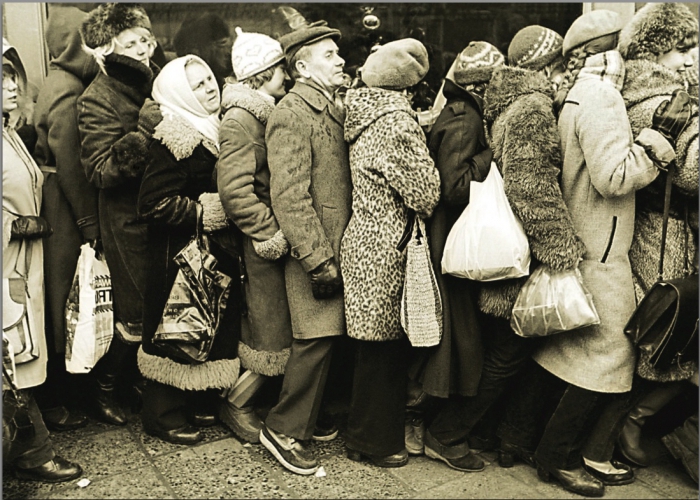The administrative-command system of the economy is a management concept in which the main role is played by distribution-command methods, and the power belongs to the central government.
Characteristic is the centralism of economic activity, as well as the ideological method of government, the prevailing party-state bureaucracy and the complete absence of democracy.
Highlights
Types of Economics:
- administrative command;
- traditional
- market;
- mixed.

Each developed state has a specific kind. The administrative-command economy is also called clean or planned. Its essence lies in the fact that management is carried out exclusively through political decisions.
Central or local governments make all decisions on the use of resources on their own. It is they who determine what quality and in what quantity you need to order raw materials for enterprises, what prices to put on a particular product. This takes into account both economic and technical factors, as well as socio-political.
Character traits
The administrative-command economy is characterized by:
- state ownership of most economic resources;
- monopolization and red tape;
- centralized, directive, economic planning as the basis of the economic mechanism;
- hierarchy
- imbalance of supply and demand, the indicators of which are increasing every year;
- the rise of the shadow economy, the black market;
- excessive price increases, the issue of money;
- the collapse of the national market;
- rampant centrifugal forces;
- replacement of commodity-money relations with barter exchange;
- lack of the right for consumers to choose a commodity unit;
- deformation of economic interests (for example, the priority of the merchants is not “sell”, but “hide”).
Benefits
The main advantage of this system is the ability to eliminate explicit unemployment (in any case, from a theoretical point of view). For this, a special resource management has been developed, with it everyone gets a job. Thanks to this mode, total control over expenses and the desired distribution of incomes are possible.
disadvantages
The main disadvantages of this model of management:
- administrative-command economy is not able to provide effective economic activity;
- production monopolies do not introduce new technologies and technical innovations;
- completely lacking the necessary material and human reserves, which may be needed in case of imbalance in the national economy;
- the system is characterized by a low level of satisfaction of needs;
- the risk of hidden unemployment;
- lack of resources;
- insufficient amount of consumer goods;
- “Egalitarianism”.
Popov's concept
For the first time, the term "command economy" was used by Gabriel Kharitonovich Popov. He contrasts it with the market, focusing on the fact that the first is a pyramid in which orders go from above, and the second is focused on the middle link. According to his theory, this is the level of directors of plants over which there is practically no order management.

Popov emphasizes that this system is so centralized that it is not able to answer a number of challenges in a short time.He is convinced that the functions of the economy have a wide range, but at the same time their weaknesses are very open.
In general, the economist criticizes this theory, saying that the transition to a market system is good for humanity because it more closely matches the real needs of society.
Researchers consider the publication of an article by Popov a very significant contribution not only to the development of the economy, but to the historical events of the USSR. It was for the first time during perestroika that the idea of restoring private property was proclaimed.
Features
The administrative-command and market economies are two different regimes that act differently on the development of the state and the life of society. For the first main feature is directive planning. This means that all organizations and enterprises must act in accordance with the planned tasks of the government apparatus. The central governing bodies own all power.

Researchers emphasize that the command economy is based on a totalitarian or authoritarian regime. It is contrary to democratic management principles and does not accept competition, free market or entrepreneurship.
Planned Economy
Managing the economy solely through central decision making is a difficult task.
A planned economy faces difficulties during the introduction of new technologies or new products. This is because enterprises are not able to conduct any experiments due to the fact that they do not have the rights to do so. A planned economy implies unlimited power in government.
Different consumers decide on their own which goods to buy, but businesses do not have voting rights. They are forced to produce according to the state plan, use certain technologies, purchase raw materials, materials and perform special tasks.

A centrally planned economy is a concept that is based on public ownership, policy guidance and control over all areas of society.
The conditions of the economy are such that free consumer market goods combined with tight regulation of enterprises. This is causing problems. This led to the fact that countries with planned economies are gradually moving to a market system in order to allow demand to control production.
State dominance
The administrative command system is found in many countries. The foundations of the economy are that the state patronizes the largest enterprises. The main distinguishing feature is the possession of all resources: land, mineral resources, minerals, institutions, national economy and, of course, finances. The fundamentals of the market economy rely on demand, in which case the central authorities decide how much and to whom the output is.
In such circumstances, monopoly and bureaucracy are inevitably born, and this, in turn, significantly reduces the incentive to develop. Among the positive aspects of the administrative-command system is free medical care, access to education and good development social sphere.

The mechanism of this system has a number of features. Firstly, the state apparatus, or rather, its higher echelons, manages all enterprises, this nullifies the independence of any economic entities. Secondly, all market relations are excluded, there is no classical connection between demand and supply, and output is controlled by central authorities.
And finally, thirdly, the state apparatus produces any leadership using administrative-command methods, and this reduces the material interest in the results of labor.
The administrative-command model of the economy in the world
Each country has its own different types of economy.Some are clearly pronounced alone, but somewhere somewhat synthesize with each other and create one - a completely new one.
Former social countries, including the Russian economy, belonged to the administrative-command system. To date, it is used by the DPRK and Cuba.
In these countries, there is an even distribution of consumer goods, and in areas such as education or the health care system, equalization elements are in place (everyone is equal before the rule of law).

Another characteristic feature is a narrow layer of the ruling state nomenclature, which has privileges in access to consumer goods, for example, housing, sanatoriums, scarce products, etc.
Central authority also acts as the owner of such an important resource as knowledge. Due to this, the level of general, professional and technical education in countries with an administrative-command economic system is quite high. This also includes the entire workforce.
Russian economy
The core of the command economy is the USSR. The system developed in the early 30s of the twentieth century. This event was preceded by two events: the October Revolution, the years of war communism (1917-1920) and the period under the name "New Economic Policy" (1921-1928).
The functions of the economy of that time were reduced not only to state control over all spheres of society, but also to the creation of production cooperatives. In agriculture, thanks to this regime, collective farms were formed.

In the Russian Federation in recent years, many reforms have been carried out that are directly related to privatization, the transition to market relations, privatization of property, and demonopolization. This led to the emergence of a modern economic system. However, no state at once succeeds in completely switching to the new regime. Therefore, in Russia there is a synthesis of elements of the administrative command system and a market economy with free competition.
Economic life is inherent mainly in transition. It can drag on for decades. The final version consists of many factors. So, the modern model of a market economy in Russia depends on:
- correlation of political forces in the state;
- nature of ongoing reforms;
- the scale and effectiveness of transformation support by international communities;
- historical traditions.








